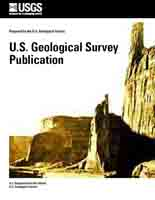Geology and hydrology for environmental planning in Washtenaw County, Michigan
Links
- More information: Publisher Index Page (via DOI)
- Download citation as: RIS | Dublin Core
Abstract
Washteaw County is underlain by glacial deposits that range in thickness from about 50 feet to about 450 feet. Underlying the glacial deposits are sedimentary rocks of Mississippian and Devonian age. The youngest of these rocks are the sandstones of the Marshall Formation in the western part of the county; the oldest are the limestones of the Detroit River Group in the southeast corner.
Sand and gravel deposits in some places in the county may yield more than 500 gallons per minute of water. Approximately 50 percent of the wells tapping the Marshall Formation, the most reliable bedrock aquifer, can yield as much as 60 gallons per minute.
Washtenaw County has sand and gravel deposits that are more than 50 feet thick. The deposits are mined in several areas and are of economic importance. In addition, there may be potential for peat production in the western part of the county and for clay production in the eastern part.
Study Area
| Publication type | Report |
|---|---|
| Publication Subtype | USGS Unnumbered Series |
| Title | Geology and hydrology for environmental planning in Washtenaw County, Michigan |
| Series title | Open-File Report |
| DOI | 10.3133/70185555 |
| Year Published | 1980 |
| Language | English |
| Publisher | U.S. Geological Survey |
| Publisher location | Lansing, MI |
| Contributing office(s) | Michigan Water Science Center |
| Description | iv, 23 p. |
| Country | United States |
| State | Michigan |
| County | Washtenaw County |


